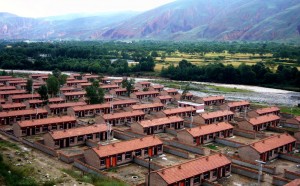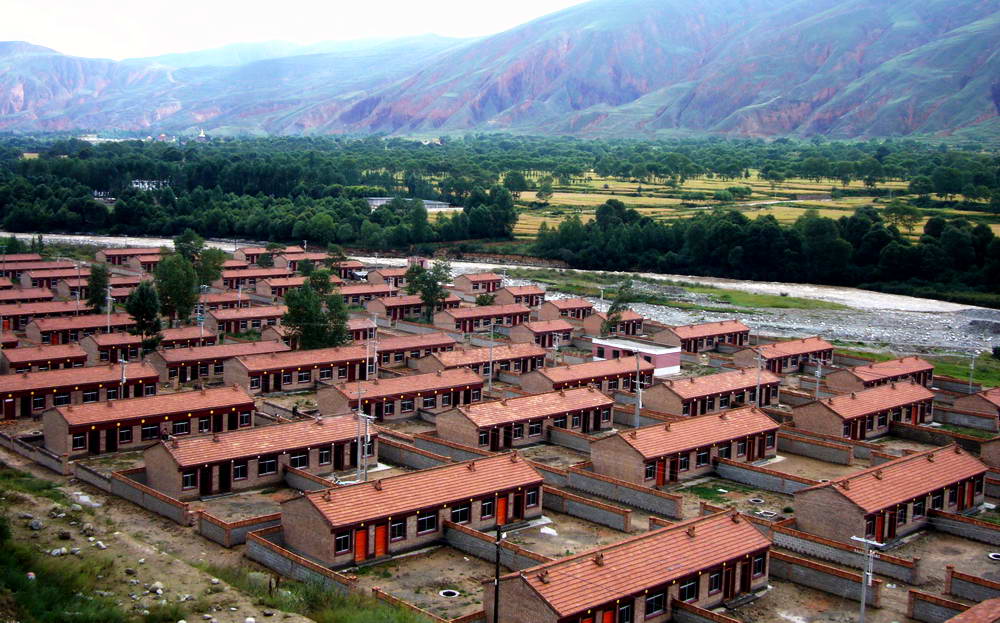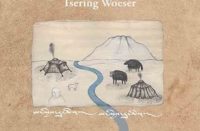 |
| Photo taken in July 2007 in Yushu, Qinghai Province. Under construction is the village for “ecological migrants” but should be called a “new urban slum”. |
High Peaks Pure Earth has translated a blogpost by Woeser written on May 4, 2011 for the Tibetan service of Radio Free Asia and posted on her blog on May 9, 2011.
This blogpost follows on from the recent blogpost “Is Migration to Tibet Unrelated to Government Policies?” that critiqued a report based on the visit of a delegation of representatives of the U.S. Senate Foreign Relations Committee to Central Tibet and Amdo in September 2010.
The full text of the report is available on the official website of the Central Tibetan Administration: http://www.tibet.net/en/index.php?id=2213&articletype=flash&rmenuid=morenews&tab=1
For more information on the policy of “Comfortable Housing”, see this 2007 report by Human Rights Watch titled “No One Has the Liberty to Refuse”.
 |
| Photo taken in August 2008 in Rebkong, Amdo. Photo shows “Comfortable Housing”. |
 |
| Photo taken in August 2007, in a village for “ecological migrants” in Gormo, Qinghai. Photo shows their simple temple. |
By Woeser
In the report based on the visit of a delegation of representatives of the U.S. Senate Foreign Relations Committee, there is one more conclusion which is worth discussing; the report claims that Tibetans benefit from “Comfortable Housing”. “Members of the delegation were able to confirm both the extent of this massive housing initiative, and the generally appreciative Tibetan attitude about it.”
This so-called “Comfortable Housing”, together with “Ecological Migration” and the “Settlement of Nomadic People” in Amdo and Kham areas, belongs to what the government calls “guiding farmers and herdsmen towards a more modern and civilised lifestyle”. The Autonomous Region’s top-level official, Zhang Qingli, said that “this is our struggle with the Dalai clique over taking the initiative to provide basic living conditions” and praised “the Communist Party as the real Living Buddha of the common people”.
Perhaps neither the Chinese nor the American sides have been aware of the fact that the U-Tsang farmers who moved from their old huts built from debris into “Comfortable Housing” came up with a name for their new homes: “Palkhar Lodroe Khangsar” − “Palkhar” means white forehead, which is a metaphor for bad luck; if, for example, both one’s parents die at a very young age, one can say one has “Palko kharpo charsha”, meaning that one’s forehead has gone white. “Lodroe” refers to cow lungs and intestines, which in the past would only be eaten by the lowest class of people; it is a metaphor for a vulgar and poverty-stricken lifestyle. Finally, “Khangsar” means new house – from these names created on the basis of traditional customs, we can see that farmers by no means approve of “Comfortable Housing”. Yet, what can disapproval really do? These are all integration measures taken by the government, one has no choice but to accept it.
People from Kham call “Comfortable Housing”, “Lagyag Khangba”, which means “hand-raising housing”. There is a whole series of “Lagyag” sayings; for instance “hand-raising solar stove”, “hand-raising tent” etc. “Hand Raising” simply means “to agree”. Only if one agrees, one will be given certain things; but the question is, what does one have to agree to? In line with the Party’s political principles of the “politics on command” and “maintaining stability is the top priority”, the first thing someone from the Autonomous Region when going through the civil servant examination has to attest is that one is “against separatism” and that one “criticises the Dalai”. When herdsmen move into “Comfortable Housing”, they have to raise their hands in approval and express that they are “against the Dalai clique” and that they “thank the Party”.
To build these housing compounds for herdsmen, during the first stage, the government provides ten thousand RMB and the people have to ask for a loan of ten thousand RMB, without any exceptions made to the single-storeyed Tibetan clay wall houses. In the second stage, the government provides ten thousand RMB and the herdsmen have to pay back an installment of ten thousand RMB, plus take out an additional loan of thirty thousand RMB, without any exceptions made to the red-tiled Han-style concrete blocks. And all houses have to be decorated with five-starred red flags, if not, they will be denounced. A local cadre said to me: “If one was really concerned about the needs of the herdsmen, instead of focusing on each village, the ‘settlements’ would be built somewhere near to where the nomads dwell during winter, this would actually help them. We know that the government is trying to use economic incentives as enticements. This is a grand idea but it does not really gain the approval of local herdsmen.”
In the vast Tibetan territory, “Comfortable Housing” in different areas has different emphases; the most terrible, however, is the method of “ecological migration”. Not long ago, the government “vigorously implemented a large-scale five year plan fostering the settlement of nomadic people from Qinghai Province, leading to fifty three thousand people leaving behind once and for all their nomadic lifestyles”. The main reason given was the degeneration of the grasslands caused by too much grazing. However, in reality, decades of continuous mining has been the main cause of destruction. I have seen some photos taken in the mid-1980s showing vast amounts of migrants from the outside who, like ants, crowded on the Matoe grasslands frantically digging for gold; today, this area has already become infertile. Another area of grasslands in Serthar, which is commonly referred to as the “swift golden horse”, has been exposed to mining for an entire ten years. Today, there is no gold left and people start to “return home”. But the area will never recover again.
Along with the disappearing of grassland areas and mineral resources such as gold, we also witness the erasure of traditional Tibetan culture and lifestyles. I will never forget the conversation I had with a few Khampa men in the new “ecological migrants” village, situated in the suburbs of Gormo in Qinghai Province, which is home to over 300 households. I asked them whether they liked it here or whether they preferred their home land? They said that of course they preferred their home land, since here there did not exist a single blade of grass and with any wisp of wind, there would be sandstorms. I also asked: when you moved here, did your Mountain Deity move with you? They lowered their heads and said: how is that possible? We had to abandon our Mountain Deity; and we also abandoned all our cattle and sheep…
Beijing, May 4, 2011





Follow Us!